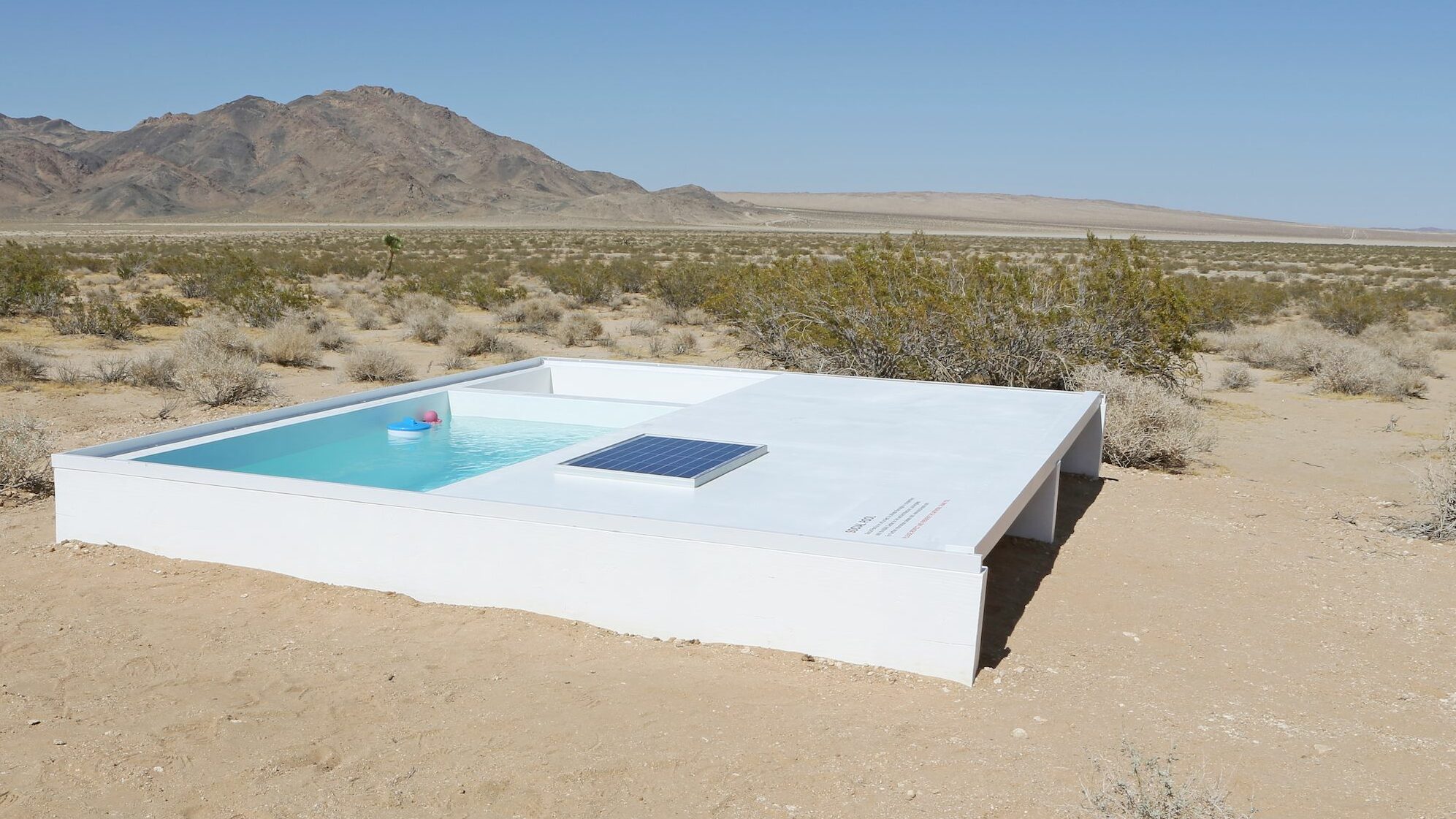Oasis or how to survive in a contemporary micro-climate under hostile conditions?

An exhibition in the Estonian Museum of Architecture presents case studies of personal utopias
Billboard
Skyscrapper
Halfpage
The exhibition OASIS in the Estonian Museum of Architecture in Tallinn, which runs until the 9th of January, 2022, showcases different projects of designers, artists and architects, different utopias. They all depict a version of an oasis in the shape of a contemporary micro-climate that offers ways of surviving in a hostile environment.
Utopian Landscapes of Care
The project is curated by Irma Arribas, a Barcelona-based architect and visual artist, and by Erich Weiss, a freelance video artist and curator from Belgium. Irma Arribas holds a PhD in architecture and works as a researcher and professor at international universities. She was the co-curator of the Spanish Pavilion of the 15th Architecture Biennale in Venice and participated in the Greek Pavilion in the 16th Biennale in Venice in 2016. Erich Weiss works as an art critic, visual artist and curator. He is the curator at large at the Picasso Museum and the Fundació Antoni Tàpies in Barcelona, and at Huis Sonneveld in Rotterdam.
In OASIS, the two curators present nine case studies of environment that they describe as “landscapes of care”. Each case study is an answer to its surrounding context. The authors invented and created tools and infrastructure to allow for human survival in difficult environments. In this way, the case studies demonstrate how we interact and respond when we are faced with challenging, limit-testing situations.
Medium Rectangle
Halfpage

Utopia: thought-providing examples for an oasis
One example of an OASIS is the Solo House. This case study was constructed by Belgian architects from Office KGDVS. They developed a villa that resembles a glass bubble. Here, occupants live in reclusion, avoiding any interaction with the outdoors.
Another oasis, the Prada Marfa Shop of artists Elmgreen & Dragset, resembles a fata morgana. The inaccessible structure along a desert highway hints at the concept of a CONSUMER OASIS. It is an ironic comment on modern society where we often get seduced by absurd marketing strategies and social media.
Medium Rectangle
Halfpage

Spanish artist Irma Cohen takes the sculpture “Blue Sail” by Hans Haacke as inspiration for her oasis. She shows humans’ relation with natural elements and the environment by taking the sculpture one step further by converting its iconic sail into a flag made of a security blanket. This symbolises the REFUGEE OASIS where refugees arrive full of faith and hope.
In the PRIVATE OASIS, Austrian artist invites visitors to search for their own social values and their place in society. His pool oasis is a small structure hidden in the Californian oasis. It has to be discovered by the visitor and results in a reflection about what constitutes a private oasis.
The VIRTUAL OASIS by Estonian game designers ZA/UM invites visitors to escape into a virtual world. To that end, they provide the game “Disco Elysium”, where users can change their identity and travel to new space-time dimension. This gamification approach shows the possibility of complementary worlds existing next to everyday realities.
In the POLITICAL OASIS, Norma Jeane presents the “Shybot” experiment. The robot lives in the desert, retired and devoid of any human contact. This experiment invites the visitor to deliberate what it would be like to be free and to not have to obey any politically decided law, while at the same time being alone and isolated.
Mexican artist Santiago Borja has created a CULTURAL OASIS by comparing two different concepts of life and living: A simple refuge created by aboriginal Indians stands next to Le Corbusier’s “machine for living”, the Villa Savoye. This provocative juxtaposition intends to make visitors of the exhibition reflect on how we want to live.
Medium Rectangle
Halfpage
The SOCIAL OASIS, presented by Andrea Zittel, is a place for experimentation, a utopia. The American artist has created a laboratory in the Joshua Tree desert where everyone is invited to analyse the rules governing our society, and where alternative solutions can be tested.
Medium Rectangle
Halfpage

A modest interactive adventure
The OASIS exhibition at the Estonian Museum of Architecture in Tallinn does not give an explicit answer to today’s many questions about how to live in hostile external conditions. Neither does it try to sell a big theory or an “oasis prototype”. Instead, the curators extend an invitation to participate in an interactive adventure at a modest scale.
The exhibition in Tallinn provides an exploratory trip through different artistic imaginations, asking visitors to discuss questions related to landscapes of care and utopian micro-climates. According to the curators, they hope to give the visitor food for thought and inspiration for a new kind of innovative, creative oasis for the immediate future.
The exhibition OASIS at the Estonian Museum of Architecture in Tallinn runs until the 9th of January, 2022. Visiting times are from Tuesday to Sunday between 11 am and 6 pm. More information can be found on the website of the museum.















